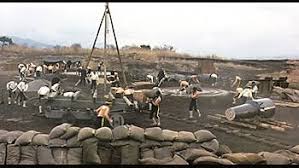Exploring the Enchantment of Transylvania

Introduction to Transylvania
Transylvania, a historical region located in central Romania, has long captured the imagination of travellers and historians alike. Renowned for its picturesque landscapes, medieval architecture, and rich folklore, this area is often associated with the tales of vampires, notably through Bram Stoker’s iconic character, Count Dracula. Beyond the legends, Transylvania offers deep historical significance and natural beauty, making it a treasure trove for both tourists and scholars.
Historical Significance
The history of Transylvania is complex and vibrant, shaped by various cultures over the centuries. The region was inhabited by Dacians before coming under Roman rule in the 2nd century AD. Following the withdrawal of the Romans, it became a melting pot of different ethnic groups, including Saxons, Hungarians, and Romanians. Many of Transylvania’s well-preserved medieval towns, such as Sibiu and Sighișoara, showcase this rich tapestry of influences through their architecture and cultural practices.
Natural Landscapes
Transylvania is famed for its stunning natural scenery, characterised by the Carpathian Mountains, lush valleys, and serene rivers. The region is dotted with national parks, including the Piatra Craiului National Park and the Retezat National Park, which are perfect for hiking, wildlife watching, and photography. The breathtaking views and diverse ecosystems attract nature enthusiasts from around the globe.
Tourism and Culture
In recent years, tourism in Transylvania has seen a significant boost as visitors flock to experience its cultural richness. Attractions such as Bran Castle, often referred to as Dracula’s Castle, draw thousands of tourists annually, while the fortified churches scattered throughout the region highlight Transylvania’s Saxon heritage. Festivals celebrating local traditions, such as the Medieval Festival in Sighișoara, provide an immersive experience into the customs and practices of the area.
Conclusion: The Future of Transylvania
As global interest in Transylvania continues to grow, the region is poised to become an increasingly important travel destination in Europe. The combination of stunning landscapes, rich history, and unique culture offers something for every type of traveller. With ongoing investments in tourism infrastructure and preservation efforts, Transylvania is not only preserving its heritage but also ensuring that it remains a vibrant and vital part of Romania’s identity for generations to come. Whether one seeks adventure in the mountains or wishes to delve into folklore and history, Transylvania remains a remarkable region waiting to be explored.








